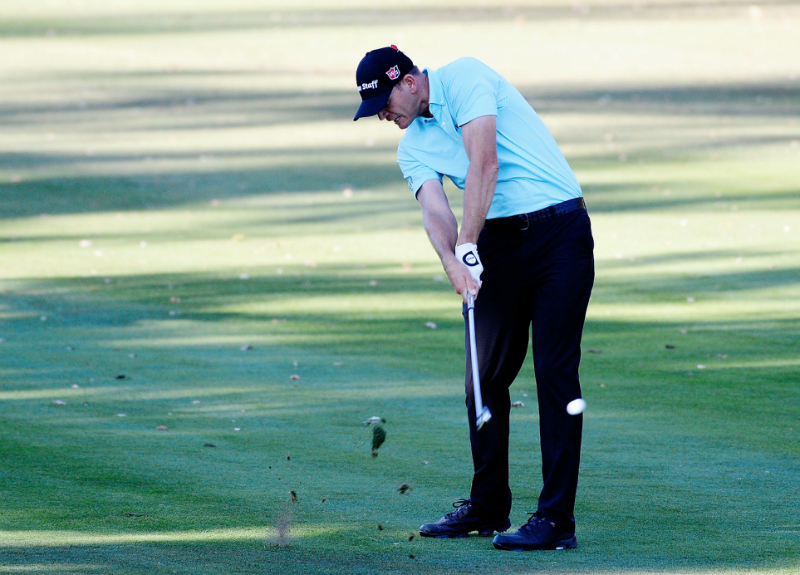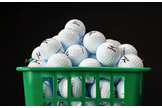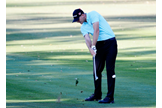How to practice like a Pro
Last updated:
Practice like three-time PGA Tour winner Brendan Steele, whose latest victory came at the 2017 Safeway Open in October
Forget beating balls on the driving range and trying to beat your longest drive. You need to practice with a purpose, which means using the winter months to fine tune every aspect of your game ready for the summer.
Brendan Steele had just three weeks to get his game in shape for the start of the 2017/18 PGA Tour Season, and he did it by slogging away on the course and in the gym nearly every day.
The American was rewarded by winning the 2017/18 season opener at the Safeway Open for a second year in a row and taking top spot in the FedEx Standings. We sat down with the 34-year-old to find out what it takes to hit the ground running on the PGA Tour.
RELATED: Practise at home with the Best Golf Practice Nets
My practice diary…
7:00: When I’m practising at home, I like to workout in the morning. I will get up around 7am, eat breakfast and then hit the gym around 8am. My workouts tend to be non-golf specific and based around strength training. My coach’s theory is that when all else is equal, the strongest athlete wins.
He changes up my routines based on where we are in the season and how much time off I have. During the off season, I work out really hard four days a week, but I don’t do any cardio. The only stuff I do is short explosive exercises like medicine ball throwing or pushing a sled.
9.30am: When I get to the course, l head straight for the practice green. I start off by unwinding a piece of string with knitting needles on each end, and measure out a straight, 10-foot putt from the hole. I’ll then work on my stroke using just my left hand from three feet and then six feet. I’ll also stick an alignment rod under my arms to make sure I’m feeling connected, and then I’ll go back to 10ft and work on drilling putts from there.
9.45am: The next 45 minutes I spend alternating between different drills. One of my favourites is a star drill, in which you set five tees around the hole from about 4ft and try to hole the putt from each position. There’s another version from 12 feet where you have three balls and score points according to how many putts you hole. So, if you miss all three putts, you get minus one. If you make one, you get one point.
If you make two out of three, it’s three points and if you make all three then it’s five points. The aim is to get to 20 as quickly as possible. I tend to draw a circle using six tees around the hole and work in between them to experience different types of breaks and reads.
10:30am: I’ll go to the chipping green for half an hour and start with some block practice by placing a Tour stick along my feet to make sure my alignment is good. From there, I like to do more random practice around the greens, focusing on lie assessment and landing spots and experimenting with different flights. But I don’t like to stay in the same place for too long; I like to throw balls down in different spots and then play to different holes to replicate on-course shots. I’m lucky enough to have a short game area where I can hit wedges back from 90 yards so I’ll crunch some numbers from there for another half an hour.
11:30am: Break for an early lunch.
12:30pm: I’ll start with some wedges on the range to loosen up again and then go straight into some swing work. I am prone to swinging too long, which means I then come into the ball too narrow and end up getting stuck behind. To help me feel like I’m swinging short and wide, my coach has got me swinging to a three o’clock and nine o’clock position on a clubface. I tend to hit 20 balls swinging like that, which really helps to keep my arms parallel and my lower body stable.
12.50pm: Once my swing starts to feel more in tune, I’ll work my way through my bag and practise different ball flights. For the Open Championship, I was trying to flight the ball down a little bit more and work on shots which were going to work against the wind. Other times, I might focus on shaping drives if I need to hit a lot of draw drivers or fade drivers.
1.30pm: Before I finish, I tend to throw about 10 balls into a fairway bunker. I’m lucky that I’m able to do that on the range at Shady Canyon Golf Club [in Irvine, California], but I think it’s important that you practise all kinds of shots because anything can happen on the golf course. You’ve got to be prepared for every eventuality.
2:00pm: Finally, if the weather is good, I like to play at least nine holes with my buddies. There is no substitute for getting out on the course and hitting off different lies.

Questions for Brendan
How much does your routine differ during a tournament week?
My coach Chris Mason dictates everything and puts a practice plan together. Wherever we go, the first thing I always do is some speed drills on the green. I try to play at least nine holes during every practice day, and then the rest of my time is spent fine-tuning things. Often, I’ll work on my distance control on the range and my coach will call out different numbers. I will then try to see how close I can get using TrackMan.
Are you a technical golfer or a feel golfer?
I’m not very technical, but I always have different feels which I am trying to work through. Sometimes things which work well one week won’t necessarily work tomorrow. What I’ve really tried to do is limit the amount of swing thoughts I have. I try to keep things very simple.
How do you structure your warm-up before a round?
If I’ve got an 8am tee time for example, I will be on the putting green at 7am. I will do my string drill to start, and then take two balls and work on my speed and read. That takes about 15 minutes, and then I’ll head to the range and hit about 40 balls for the next 20 to 25 minutes. Usually, I’ll start with a few wedges and then go into the nine o’clock to three o’clock drill to promote that feeling of swinging short and wide. From there, I’ll work my way up to the driver, hit a few chips and then head back to the putting green and run process putts.
How do you stay fuelled and hydrated during a round?
When I get on the first tee, I normally grab an Amino Vital sports drink, which is an amino acid complex and gives me a boost before my round. When I reach the turn, I have a whey protein shake, but I tend to eat something every three or four holes. Normally I stock my bag with beef jerky, nuts and a few energy bars.
What advice would you give to an amateur looking to improve their game?
Always work on your short game. People don’t spend nearly enough time on their chipping, and don’t have a clear idea what they want to do. First, you need to assess the lie; then you need to identify a landing spot and figure out what trajectory is needed. If possible, you always want to land it on the flattest part, about 10 feet on. The beauty of this game is that there’s always a decision to be made about when to take a shot on and when to be a little more cautious. But if you like the number you’ve got and you know the miss isn’t too bad, be confident and go for it.


